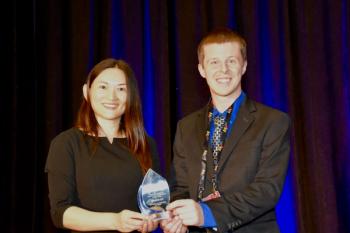
New Approach Enhances Accuracy of Laser-Induced Breakdown Spectroscopy for Coal Analysis
New approach using polarization spectrum fusion enhances the accuracy of laser-induced breakdown spectroscopy for coal analysis, providing improved predictions of ash content, volatile content, and calorific values.
Laser-induced breakdown spectroscopy (LIBS) has gained recognition as an effective technique for the online analysis of coal properties, including ash content, volatile content, and calorific value. However, to further improve the accuracy of quantitative analysis, researchers from Beijing Institute of Technology and the University of Oxford have proposed a novel approach called polarization spectrum fusion.
In a recent study, lead authors Qianqian Wang and Geer Teng analyzed the polarization effect of laser-induced coal plasma emission using the Stokes parameters of the average spectra (1). They discovered that the partially polarized phenomenon of the emission could be utilized to enhance the performance of quantitative analysis models through the fusion of polarization spectral data.
The fusion scheme involved combining data from two different plasma polarization spectra: PRLIBS (0°, 0) representing horizontal polarization and PRLIBS (90°, 0) representing vertical polarization. By fusing these datasets, the researchers aimed to acquire a more comprehensive set of spectral information, leading to improved prediction accuracy.
The team established an efficient prediction model using the fused data and evaluated its performance in predicting the ash content, volatile content, and calorific values of coal. The results were promising, with the fusion models achieving a root mean square error prediction (RMSEP) of 1.497% for ash content, 0.595% for volatile content, and 0.597% for calorific values. The coefficients of determination (R2) were also high, with values of 0.980 for ash content, 0.968 for volatile content, and 0.978 for calorific values.
Comparing the fusion models with regression models based on individual PRLIBS (0°, 0), PRLIBS (90°, 0), and LIBS data, the data fusion scheme demonstrated a significant improvement in the prediction model's performance. This improvement can be attributed to the fact that there is no perfect correlation between PRLIBS (0°, 0) and PRLIBS (90°, 0). By fusing the polarization spectra, the researchers were able to capture a greater number of characteristic spectral lines with high importance scores, leading to enhanced prediction accuracy.
The findings of this study demonstrate the feasibility and effectiveness of the polarization spectrum fusion approach in providing better analytical results for coal analysis. By leveraging the partially polarized emission in LIBS, the fusion models offer an enhanced understanding of coal properties, enabling more accurate predictions of ash content, volatile content, and calorific values.
The proposed approach holds great potential for advancing the application of laser-induced breakdown spectroscopy in coal analysis. With improved accuracy, researchers and industry professionals can make more informed decisions regarding coal quality, combustion efficiency, and environmental impact. This development contributes to the ongoing efforts in optimizing coal utilization and ensuring sustainable energy production.
Reference
(1) Xu, X.; Wang, Q.; Teng, G.; Zhao, Z.; Wei, K. Accuracy enhancement of laser-induced breakdown spectroscopy by polarization spectrum fusion. Spectrochimica Acta Part B: At. Spectrosc. 2023, 204, 106669. DOI:
Newsletter
Get essential updates on the latest spectroscopy technologies, regulatory standards, and best practices—subscribe today to Spectroscopy.




